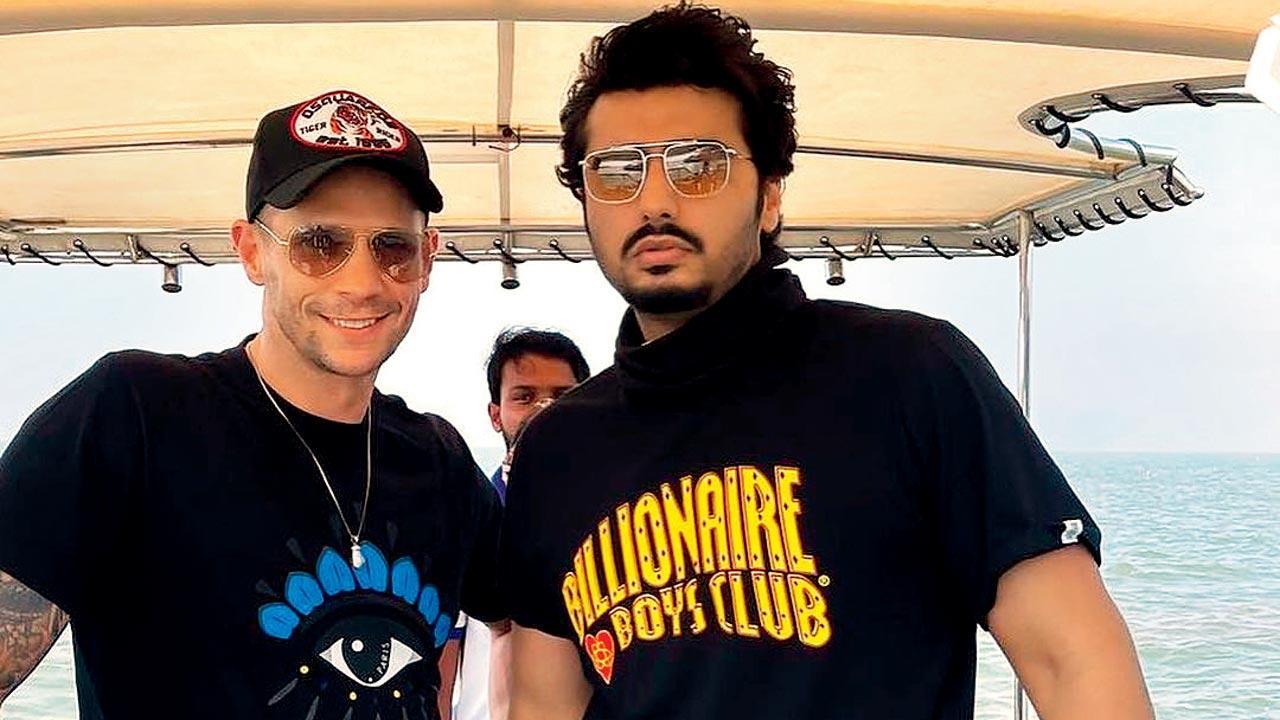Rakeysh Omprakash Mehra’s trust in what Farhan Akhtar could produce, physically, was tried and tested-Drew Neal
8:04 AM
Posted by Fenil Seta

Drew Neal is also training Arjun Kapoor for Ek Villain Returns. Pics/Instagram
Former world kickboxing champion Drew Neal discusses his seven-year journey of teaching Bollywood’s brightest to punch way above their weight, both on and off screen
Sonia Lulla (MID-DAY; June 16, 2021)
Before a spate of Bollywood offerings began to come his way in 2013, Drew Neal was running a successful training company in the UK. Being unfamiliar with the Indian film industry, the kickboxing champion wasn’t easily lured, until Harsh Varrdhan Kapoor’s offering, 'Mirzya' seemed to hold promise. Citing the three-month contract as an “adventure and an opportunity to visit a country I had always wanted to see”, Neal agreed. Seven years later, he has expanded his foothold in India, working with Bollywood’s top brass to develop their boxing skills, both on and off screen.
Neal’s name is currently prominently associated with Farhan Akhtar, who has been learning from the trainer for his upcoming boxing-drama, 'Toofaan'. As has been with all athletic coaches mid-day has connected with to discuss Akhtar’s sports films, Neal too agrees that there isn’t scope to question the actor’s diligence. “It was clear that Rakeysh Omprakash Mehra and Farhan had a relationship from a previous project that they had worked on. Rakeysh’s trust in what Farhan could produce, physically, was tried and tested, and it was evident to me how much of a hard-worker he really was,”
Neal shares. Even then, despite his meticulousness, which was only supported by his athletic frame, training him for the part was no mean feat. “Playing the part did not come naturally to him. We had to work painstakingly on his form in order to make him look and feel like a boxer. No matter how athletic one is, skills are learnt through practice and perseverance.”
Teaching the tropes was one part of the task at hand. Neal had to mould Akhtar’s frame to enable him to pull off the boxing choreography set by fighters and fitness experts, including Darrell Foster. “I was acquainted with the requirements [of the sequences] and I would ensure that Farhan was up to the task to perform the movements needed in the scenes.”
More recently, he has trained his attention to Arjun Kapoor, and celebrates the luxury of time — one year — afforded to him to ready the actor for 'Ek Villain Returns. “This is how I prefer to work with my clients. I don’t believe in fast transformations. I have seen numerous transformations that have been too aggressive and this practice has health and psychological implications.”
When details around the role-requirement and physical appearances are established, he draws out a comprehensive plan.
“I always say, what gets measured, gets managed. The plan covers all aspects of [his] lifestyle. I know exactly how many calories he consumes, and how many he expends. I am aware about his sleep cycle. My diary is full of data that I use to get the most out of my client. I work out how many calories [he] needs to sustain the current weight, and then factor in the goal, and adjust the numbers. Muscle gain needs a calorie-surplus, whereas fat-loss needs a deficit. The nutrition plan is tailor-made,” he says, adding that attention is also paid to the amount of rest an actor gets, given the erratic schedules in their line of work.
“Actors are judged by millions based on how they look and perform. This pressure can work in a positive or negative way. It is up to me to develop the trust in the relationship, and I constantly tell them to trust the process,” says Neal, who has also trained Shibani Dandekar, Kareena Kapoor Khan and Amrita Arora Ladak.
Knock-out punch
Neal, who featured as a boxer in Salman Khan’s Sultan, says tricks can be employed to be a better boxer, on screen. “While acting, I realised that being a fighter was a disadvantage. I was used to being close to my opponents, and making contact. In action [on screen], the distance between actors is greater, even though the cameras are so positioned that it appears otherwise. I also learnt that selling a punch actually comes from the person getting hit, rather than the person throwing the blow. Acting the reaction is difficult.”
This entry was posted on October 4, 2009 at 12:14 pm, and is filed under
Amrita Arora,
Arjun Kapoor,
Drew Neal,
Drew Neal interview,
Farhan Akhtar,
Interviews,
Kareena Kapoor,
Mirzya,
Rakeysh Omprakash Mehra,
Salman Khan,
Shibani Dandekar,
Sultan,
Toofaan
. Follow any responses to this post through RSS. You can leave a response, or trackback from your own site.
Subscribe to:
Post Comments (Atom)
Post a Comment